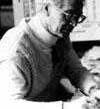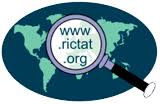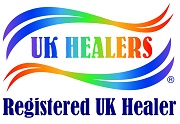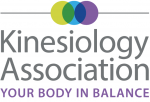Buteyko Method Theory
A BREATHING DISCOVERY
At the end of the last century Austrian physiologists Breyer and Gering made a sensational discovery – man is the only biological specimen on earth who had not developed a correct way of breathing. All other beings know how to breathe, but not humans. Just observe those around you carefully and you will find that people breathe differently. Some breathe deeply, others superficially, some faster, others slower, with pauses and some without.
NORMAL BREATHING
Russian Medical Scientist Professor Konstantin Pavlovich Buteyko has devoted over 40 years of research into breathing and in the process discovered that only one in ten people breathe correctly. Natural or normal breathing results in a very specific accumulated gas mixture that our organism requires. to function properly.
THE MYTH BEHIND DEEP BREATHING
Traditional wisdom tells us that deep breathing is the best as it is thought to provide the most oxygen. We inhale oxygen and exhale carbon dioxide and the conclusion that is drawn is that oxygen is good for us and carbon dioxide is harmful. When Professor Buteyko was first analysing his patients he discovered that those who were sick breathed much more than those who were healthy; that is, their tidal volume, depth and frequency was greater. Could it be that “breathing deeply” is in fact contributing to ill health?
THE OXYGEN PARADOX
In 1871 the Dutch doctor De Costa discovered the “Hyperventilation Syndrome” whereby deep breathing in a relaxed state caused dizziness and sometimes fainting. This is often incorrectly attributed to oxygen saturation. According to the Verigo-Bohr effect, it is the ratio of carbon dioxide to oxygen which permits the release or retention of oxygen from the blood.
At the end of the last century Russian physiologist Verigo and Dutch scientist Bohr independently discovered that without carbon dioxide, oxygen is bound to the haemoglobin of the blood and simply does not work. This consequently leads to oxygen deficiency in the tissues of the brain, heart, kidneys and other organs and a raising of blood pressure.
Strange as it may seem, oxygen deficiency is not caused by lack of oxygen but by the lack of carbon dioxide! If we breathe too much we get less oxygen.
HOW MUCH CARBON DIOXIDE DO WE NEED?
For the cells of the brain, heart, kidney and other organs, our blood requires a concentration of 6.5% carbon dioxide and only 2% oxygen.
THE AIR THAT WE BREATHE CONTAINS 200 TIMES LESS CARBON DIOXIDE THAN WE NEED AND 10 TIMES MORE OXYGEN THAN WE NEED.
The function of our respiratory system is not just to push air in and out but to maintain a very specific ratio of oxygen to carbon dioxide.
OVERBREATHING OR HYPERVENTILATION
When we over breathe or hyperventilate, we lose valuable carbon dioxide. According to Professor Buteyko, “hidden hyperventilation” often goes undiagnosed. When a person is acutely hyperventilating, it’s obvious and the implications to the organism are disastrous. Hidden hyperventilation often goes unnoticed. Asthmatics over breathe three or more times the recommended amount. Long term “hidden hyperventilation” is the hinge upon which Buteyko’s discovery and method are based.
TEST THIS OUT FOR YOURSELF
Breathe very deeply for 5-10 minutes and you may experience an asthma attack, blocked nose, dizziness, chest pains, palpitations, coughing and many other symptoms. Reducing the depth of your breathing by breathing shallowly can reverse these symptoms often within a few minutes.
HOW MUCH SHOULD WE BREATHE?
Physiological norms apply to pulse, blood pressure, sugar levels, temperature and breathing as well. Ideally, at rest, an adult should breathe lightly, superficially, and only through the nose. A healthy person can perform light exercise and still breathe lightly, whilst a sick person requires deep breaths almost all of the time.
BUT HOW CAN WE TELL IF WE BREATHE TOO DEEPLY OR NOT?
Many people think they breathe shallowly but in fact they breathe very deeply. Many people who suffer from asthma, allergies, bronchitis, emphysema and breathlessness will tell you they can’t breathe enough, when in fact they are breathing three or more times the normal volume of air. Professor Buteyko developed a test that can measure your depth of breathing and subsequent retention of carbon dioxide, resultant oxygenation and health. Professor Buteyko calls it the “Control Pause”. The Control Pause Breathing Test:
- Breathe in gently for two seconds.
- Exhale gently for three seconds.
- Hold your breath, pinching the nose after exhaling, holding your breath until it first becomes difficult.
If you manage less than 10 seconds (on the third step) you have very serious health problems. If you can hold less than 25 seconds your health requires attention, 30-40 seconds is satisfactory and 60 and above is excellent.
WHAT ABOUT THE AIR WE BREATHE?
We are all aware of the dangers of pollution and the declining quality of our air. Many blame asthma and other breathing disorders on pollution and the environment, yet asthma strikes in the county as well as in the cities and some people who work in very polluted environments never suffer with asthma or emphysema. Could there be another problem with the air we breathe?
OUR CHANGING ENVIRONMENT
The problem faced by the evolving human organism has been the depletion of carbon dioxide in our atmosphere from the tens of per cent of ancient eras to the current level (1982) of 0.03%. Human evolution has dealt with this dilemma by creating an autonomous internal air environment within the alveolar spaces of the lungs. These alveoli ideally contain around 6.5% of carbon dioxide, quite a contrast to the surrounding air. The gaseous mix in the womb is also an interesting indicator of the ideal human environment – here there exists between 7/8% carbon dioxide.
WHAT HAPPENS WHEN WE OVER- BREATHE AND LOSE CARBON DIOXIDE?
Let’s take a look at what carbon dioxide does for us, and from this, we can ascertain what a deficiency may mean:
- Oxygenation
Carbon dioxide regulates oxygen departure from blood and a fall in carbon dioxide results in reduced oxygenation of tissue and vital organs (Verigo-Bobr Effect). Poor oxygenation leads to myriad complaints. - Acid/Alkali Balance and the Immune System
Carbon dioxide, through its conversion to carbonic acid, is the most important regulator of our acid/base balance. A lowering of carbon dioxide results in a shift of the body’s pH toward alkalinity, which changes the rate of activity of all body ferments. An alkaline system is much more susceptible to virus and allergy as it compromises the immune system. A great deal of information is available about the role of pH in the process of binding of the antibody with the antigen. A deviation of the pH from a certain optimum results in a decrease in the affinity and therefore in the weakening of the immune reaction. - Vessels
Carbon dioxide is a smooth muscle tissue dilator; therefore a shortage of carbon dioxide can cause spasms of brain, bronchi and other smooth muscle tissue. Asthma spasms and migraines are prime examples of this situation. - The Nervous System
Carbon dioxide is a regulator of nervous system activity and a lowering of carbon dioxide in the nerve cells heightens their excitability, alerting all branches of the nervous system and rendering it extraordinarily sensitive to outside stimuli. This leads to irritability, sleeplessness, stress problems, unfounded anxiety and allergic reactions. Concurrent with this, the breathing centre in the brain is further stimulated, thereby causing an increase in breathing rate and a further loss of carbon dioxide, and a vicious cycle begins. - The Cardiovascular System
Carbon dioxide is a regulator of the cardiovascular system. A depletion of carbon dioxide can result in angina, chest pains, high or low arterial pressure, hypertension, stenocardia and eventually sclerosis of vessels, myocardial infarcts and strokes. - The Digestive System
There is a direct relationship between the level of carbon dioxide and the activity of the digestive glands, in particular the linear relationship between the intensity of gastric secretion and the level of carbon dioxide. A shortfall of carbon dioxide can lead to ulcers and poor digestion.
Note for medical professionals:
The above reference to carbon dioxide does not specify its form (i.e. dissolved carbon dioxide gas, carbonic acid, bicarbonates, carbonates or carbamates). Furthermore, the author has not explained the various shunts between defensive and compensatory mechanisms that may lead to obvious paradoxes, such as high levels of CO2 in the blood of asthmatics, and the compensating shifts between respiratory alkalosis and metabolic acidosis.
A SYSTEM TO CORRECT THE BREATHING
Over 40 years ago Professor Buteyko developed a system to normalise the breathing, thereby normalising the level of carbon dioxide. Techniques were developed to retrain the complex involuntary mechanisms that govern our breathing.
We breathe thousands of times a day and we have developed defence and compensatory mechanisms (often described as diseases) that compensate for our dysfunctional breathing. For these reasons, it is not a simple matter to change or normalise a human’s breathing pattern. “Playing the piano is simple, you just hit the keys with your fingers. Making music, however, takes practice and expert tuition, and so it is with reconditioning the breathing”.
Professor Buteyko developed a series of special breathing exercises, techniques and lifestyle changes that are taught over a minimum of five consecutive one hour daily sessions. Some patients will require more than five sessions, depending on their individual condition.
Patients are first taught to overcome symptoms using Buteyko’s techniques. For asthmatics, this quickly results in the ability to overcome asthma attacks by restoring a more normal level of carbon dioxide, which dilates the bronchial tubes. Wheezes, coughs and breathlessness also succumb to these techniques. In the course of time and with practice the average breathing pattern becomes more normal and symptoms occur with less frequency and severity. Naturally, the requirement for ‘rescue’ medication is substantially reduced or eliminated. A doctor can provide the proper advice regarding preventative medication as the condition continues to improve.
Patients with emphysema (who generally take the same drugs as asthmatics) will quickly find they can walk further before becoming breathless and those with allergies, bronchitis, coughs and snoring also find their symptoms are first reduced then removed.
Generally, all patients are delighted to find an increase in vigour, concentration and the elimination of many symptoms that one would not necessarily attribute to improved breathing.
Buteyko’s method should only be taught by a certified and experienced Buteyko practitioner. Buteyko practitioners teach groups or on a one-to-one basis. The Buteyko method is especially suitable for children (five and over) who often get results more quickly than adults. In fact, most children enjoy their special Buteyko techniques and exercises.
Buteyko’s Statement
 I, Professor Konstantin Buteyko, the inventor of the method of treatment for some chronic diseases of the respiratory system, nervous system, hormonal system, cardio-vascular system, immune system (Patent No: 1067640), known in the West as the Buteyko Method, categorically make this statement:
I, Professor Konstantin Buteyko, the inventor of the method of treatment for some chronic diseases of the respiratory system, nervous system, hormonal system, cardio-vascular system, immune system (Patent No: 1067640), known in the West as the Buteyko Method, categorically make this statement:
The Buteyko Method appears misleadingly simple to practice. However, there is a specific training on how to apply this method to each individual patient. If this is done incorrectly there could be severe complications and damaging effects on a patient’s health.
It is for this reason that I only allow qualified practitioners to teach the Buteyko Method to patients in a workshop environment. As a Professor of Medicine I clearly state that it is dangerous for medical doctors or health care professionals to practice the Buteyko Method without the appropriate training.
I categorically state that it is exceedingly dangerous for patients to be instructed in the Buteyko Method through the medium of video, audio tapes, books, instructions and manuals. The Buteyko Practitioner assesses the 4 page Patient History Form before commencement of the workshop. They then monitor the progress of each individual patient on a daily basis during the workshop course, adjusting the use of the techniques to each individual’s need, to ensure correct use of the method and prevent complications arising. They are available for follow-up consultations where necessary.
Any Buteyko practitioner who does not train patients thoroughly in the Buteyko Method by taking shortcuts with videos, tapes, books, instructions and manuals and who try to offer training to potential Buteyko practitioners will have their certificates removed.
I will also use legal measures and public opinion to stop those who misuse and abuse my method and bring the Buteyko Method into disrepute.
Meanwhile, I will wish people well – my only concern is to see the Buteyko Method taught correctly in the West.
I congratulate all patients who have achieved freedom from their disease by practising the Buteyko Method.
F.A.Q.
Is there any equipment needed?
No. The technique involves the practice of some exercises together with an understanding of the principles behind the method and a change in consciousness of breathing in relation to everyday activities. Some recommendations are made concerning habits of posture, sleep, eating and exercise.
Is there any medicine involved?
No. However, patients using prescribed preventative medication are strongly advised to continue using it until such time as the practitioner may suggest that it be reduced in consultation with the patient’s doctor. Use of relief medications is usually discouraged unless the Buteyko method practices fails to provide relief.
Can it be dangerous?
No – as long as the individual instructions of the practitioner are carefully adhered to. For people with certain conditions, incorrect practise of the method could be dangerous, so it is essential to learn the method with the supervision of a qualified and experienced practitioner.
How long does it take to recondition the breathing?
This depends on many factors such as the age and health of the participant, as well as their degree of practice and their willingness to be aware of their breathing. Most people experience improvements within the first few days of the workshop – eg. reduced symptoms, improved sleep, reduced mucus, improved digestion, better energy levels – and usually reduction of the need for relief medication. More profound systemic improvements occur over time.
How much practice is required?
Again, this depends on the individual. Initially, adults are encouraged to practise a 30-minute routine on rising and before sleep as well as another time during the day if possible. This can usually be reduced over time. Children usually require less practice – 20 minutes several times a day is usually sufficient – and also reducible over time. The method is really more about consciousness than the actual practice of exercises – except for kids whose breathing and habits change more easily.
Is it beneficial for everyone?
Most people who live a modern lifestyle are over-breathing. However, not all have symptoms or illnesses which would indicate this. But everyone would benefit from a more efficient breathing pattern. Most participants have symptoms which they want to reduce, but some learn the method as a tool for general health – to strengthen immune and hormone function or to improve or refine sports or exercise performance – and, of course, to have a healthier old age.
Where is it available?
For many years it was available only in Russia. However, it is becoming more available around the world now. The experience of the practitioner can make a difference in learning the method – especially with conditions other than asthma, so finding a well trained and experienced practitioner is important. Most practitioners in the West are not medical doctors.
What is the age range for learning the method?
Some children as young as 3 or 4 can learn the method – but parents need to be present for such training. For infants, either or both of the parents learn the method for themselves and are given specific advice regarding their young children. Even people of up to 90 y.o. can get value from learning the method. Older people may need to practise more – but they usually have more time.
According to Professor Buteyko, chronic hyperventilation syndrome (CHVS) is a root cause of the most common chronic diseases – therefore the emphasis of treatment is always to reverse the CHVS. Even so, different disease types and varying severity require different strategies for effective reversal.
In addition, cleansing reactions which are a part of the process wherein toxins and infections are discharged and the body heals itself, require special attention and vary from condition to condition.
Please note:
1. We have categorized diseases by the general degree of skill, attention and time to treat.
2. Naturally, the degree of the condition and medications have a significant influence on treatment. Several conditions are in more than one category to reflect this variance.
3. Rapid improvement of symptoms often occurs before the underlying condition is optimally treated.
4. An assessment consultation will provide the best estimate of the realistic outcome of treatment – which is often different from the guide below.
5. The following guide is based on average practical experience and is therefore imperfect – but may give some real indication as to what can be expected:
+ routinely fully reversible
++ routinely rendered asymptomatic or close to it
+++ routinely improved with significant reductions in symptoms but remain as a vulnerability
^ routinely improved – but the degree of symptomatic improvement is variable and often limited
^^ requires individual assessment to provide indication
GRADE 1
(Basic Training – 30 days)
ADD +
ADHD +
allergies +
anxiety +
arrhythmia (intermittent) +
asthma +
blocked nose +
bronchitis +
circulatory problems (mild) +
cough +
constipation +
eczema (in children) +
high blood pressure (mild) +
insomnia +
obesity (mild) +
prone to cold and flu +
sleep apnea (mild) +
snoring +
stuttering +
tachycardia +
GRADE 2
(Intermediate Training 1-3 months)
agoraphobia +
angina +
arrhythmia +
arthritis (onset) ++
arthritis +++
asthma (use of oral steroid) +
bipolar +
cardio vascular (mild) +
chronic fatigue (intermittent) +
colitis +
circulatory problems (Reynauds’s etc) +
COPD (onset) ++
diabetes type 2 (without insulin) +
depression +
eczema (adults) +
emphysema(onset) +++
erectile dysfunction +
high blood pressure, antagonistic ++
high cholesterol +
Infertility +
lupus (early) +
migraine +
multiple sclerosis (asymptomatic or few symptoms) +++
obesity (severe and or with other conditions) +
partial paralysis ++
psoriasis ++
tinnitus +
post natal syndrome +
sleep apnoea (with complications) +
GRADE 3
(Complex Training 6+ months)









